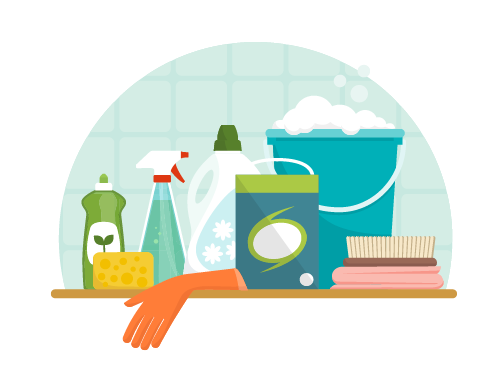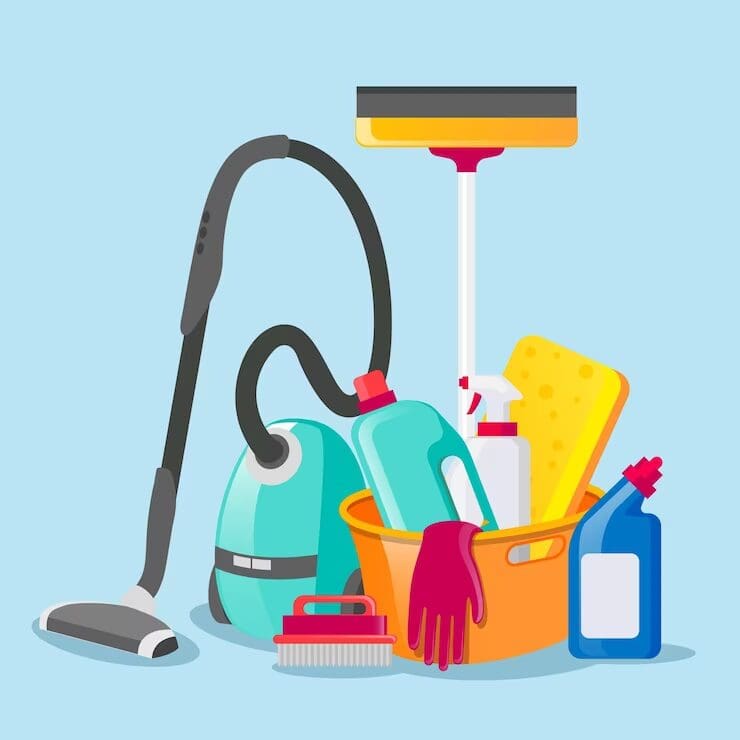Achieve a Cleaner Home with These Everyday Cleaning Tips: Defrosted and Cleaned Every Few Months and More
Achieve a Cleaner Home with These Everyday Cleaning Tips: Defrosted and Cleaned Every Few Months and More
Blog Article
Recognizing the Need for Completely Decontaminating and Sterilizing Regularly Touched Surfaces in High-Traffic Areas
In the realm of public health and safety and security, the thorough sanitation and sanitization of often touched surfaces in high-traffic locations stand as critical steps in stopping the spread of unsafe pathogens. By checking out the numerous facets of surface sanitation, from the threats connected with ignoring cleaning methods to the reliable techniques that can be employed, a more clear understanding arises of the important duty these techniques play in securing public health.
Importance of Surface Area Disinfection
Stressing the complete disinfection of high-traffic surface areas is vital in maintaining a sanitary atmosphere and preventing the spread of dangerous microorganisms. High-touch surface areas such as door manages, light switches, lift switches, and counter tops function as breeding premises for bacteria and infections. Normal disinfection of these surface areas is vital to reduce the danger of contamination and transmission of illnesses.
By carrying out a robust disinfection method, institutions and services can develop a safer atmosphere for workers, site visitors, and customers. Proper surface area disinfection not just minimizes the spread of infectious illness however additionally infuses confidence in the cleanliness and security of the facilities. This aggressive strategy demonstrates a commitment to health and wellness and health, which is specifically important in high-traffic areas where the possibility of exposure to microorganisms is increased.
In addition, surface area sanitation plays an essential function in general infection control methods. Incorporated with hand health techniques, putting on masks, and keeping physical distancing, detailed sanitation of high-touch surface areas creates a thorough protection versus the transmission of dangerous microbes. Focusing on surface area disinfection is a vital element of an alternative method to health and wellness and safety in shared rooms.
Threats of Disregarding Cleansing Practices
Ignoring complete disinfection of high-traffic surfaces significantly enhances the threat of viral and bacterial contamination, posing a significant hazard to the health and wellness and safety and security of people often visiting these areas. Failure to apply appropriate cleaning techniques can cause the accumulation and spread of hazardous virus, consisting of bacteria and infections, on often touched surfaces such as doorknobs, handrails, elevator switches, and countertops.

Furthermore, neglecting the value of extensive cleaning not just compromises the health of individuals but likewise weakens initiatives to preserve a sanitary and clean setting. It is important to recognize the relevance of proper sanitation protocols in stopping the spread of infections and safeguarding public wellness.
Effective Disinfection Approaches
To preserve optimum tidiness and lower the risk of contamination on high-traffic surface areas, using efficient sanitation approaches is necessary. Among the most typical and efficient sanitation methods is utilizing chemical anti-bacterials. These products can vary in stamina and make-up, with some targeting specific microorganisms like viruses or germs. It is vital to adhere to the producer's directions for appropriate dilution, call time, and air flow when using chemical disinfectants to ensure their efficiency - defrosted and cleaned every few months.
An additional reliable approach is using UV-C light. UV-C light has actually been revealed to navigate to these guys be efficient in killing a large variety of bacteria by disrupting their DNA structure, thus preventing them from replicating. It is crucial to make use of UV-C light appropriately, making sure that the appropriate intensity and direct exposure time are used to accomplish the desired sanitation results.
Additionally, employing steam cleaning as a sanitation technique can be highly effective, particularly on surfaces that are heat-resistant. Steam can permeate porous surfaces and kill germs, infections, and other microorganisms effectively. When using heavy steam cleansing, it is crucial to ensure that the surface gets to the required temperature for an enough amount of time to assure proper disinfection.
Effect On Public Health
The upkeep of high criteria of sanitation additional reading and sanitation on high-traffic surface areas plays a crucial role in safeguarding public health. Frequently touched surfaces in areas with high footfall, such as doorknobs, hand rails, lift buttons, and washroom centers, offer as breeding grounds for unsafe virus.
In high-traffic areas like airports, colleges, health centers, and public transport systems, the impact of strenuous disinfection measures can not be underrated. Focusing on the sanitization of regularly touched surface areas is a proactive technique to promoting public health and enhancing the safety and security of individuals in common rooms.
Implementing Normal Cleaning Protocols
Promptly instituting and adhering to a constant schedule of cleansing procedures is vital for keeping the tidiness and security of high-traffic surface areas. Regular cleaning procedures are essential in protecting against the buildup of germs and pathogens on often touched surfaces, specifically in areas with high foot website traffic. By applying an organized approach to cleaning, organizations can efficiently lower the danger of disease transmission and develop a healthier environment for staff members, consumers, and the general public.
To develop an efficient cleaning routine, it is vital to determine high-traffic locations that call for frequent interest. These areas might include doorknobs, hand rails, lift buttons, toilet centers, and common devices. Implementing a regular cleansing regimen that targets these surfaces numerous times a day can considerably reduce the spread of unsafe germs and viruses.
Furthermore, making use of suitable cleaner and anti-bacterials is essential to ensuring that surfaces are extensively disinfected. Routine training of cleaning up staff Your Domain Name on proper cleansing strategies and the importance of adherence to the cleaning routine is likewise crucial in preserving a sanitary environment. By focusing on consistent cleaning protocols, companies can promote the wellness and wellness of individuals that communicate with these high-traffic surfaces.

Conclusion
In verdict, it is important to focus on detailed sanitation and sanitization of frequently touched surface areas in high-traffic areas to protect against the spread of damaging pathogens and preserve public health. Neglecting correct cleansing practices can enhance the danger of contamination and transmission of illness. By carrying out routine cleaning procedures and making use of efficient disinfection methods, we can create a more secure environment for everybody (Everyday cleaning). It is important to identify the relevance of keeping clean surfaces in high-traffic locations to ensure the well-being of the neighborhood.
In the realm of public wellness and safety, the meticulous disinfection and sanitization of often touched surface areas in high-traffic areas stand as paramount steps in preventing the spread of damaging virus. By discovering the different elements of surface area disinfection, from the dangers associated with neglecting cleaning procedures to the efficient methods that can be used, a clearer understanding emerges of the essential function these techniques play in securing public health.In addition, employing vapor cleansing as a disinfection technique can be highly reliable, particularly on surfaces that are heat-resistant. When making use of vapor cleansing, it is crucial to make sure that the surface area reaches the needed temperature for a sufficient quantity of time to guarantee proper disinfection.
In verdict, it is critical to prioritize extensive sanitation and sanitization of regularly touched surfaces in high-traffic areas to prevent the spread of dangerous virus and preserve public health.
Report this page